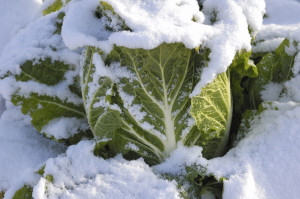Create Nameplates for Plants Using Garden Series Plant Markers
 If you have squirrels living in your neighborhood, you’ll notice that the population is very busy this time of year. They are scurrying up and down trees carrying nuts in their mouths and burying them in favored hiding places all around. They instinctively know that industriousness this fall will pay off once winter arrives. In a similar way, spring and summer gardeners can put in a little effort now and reap the benefits next year. This fall you can prepare your soil, plan your garden and create nameplates for plants to get ready for next spring.
If you have squirrels living in your neighborhood, you’ll notice that the population is very busy this time of year. They are scurrying up and down trees carrying nuts in their mouths and burying them in favored hiding places all around. They instinctively know that industriousness this fall will pay off once winter arrives. In a similar way, spring and summer gardeners can put in a little effort now and reap the benefits next year. This fall you can prepare your soil, plan your garden and create nameplates for plants to get ready for next spring.
Putting in the Groundwork
As you look ahead to a new garden in the coming year, look for someplace where the ground is level and where plants will receive six or more hours of full-on sunshine. Sunlight is fuel for growing so pick a spot where there’s plenty of it.
Next, mark off the area with stakes and string. You could also do this directly on the ground with a flexible hose or rope. The idea is to clearly define the edges of your plot.
Believe it or not, now is actually a good time to shovel up the sod and weeds. Next year when the earth is warming, you’ll be in a battle with weeds. If you attack now, your job next spring will be far easier. Be sure to get underneath the grass with your spade or shovel. Then chop blocks of sod into small chunks that you can comfortably load onto your wheelbarrow to be dumped in your composting area.
If you don’t have a composting area, start one. Composting is an easy way to give your garden precious nutrients. Any non-protein food waste can be added to your compost pile. A compost pile can be placed behind a length of decorative fence, it can go in a composting bin or can be put in any out-of-view section of your yard. So long as there is no protein involved, you don’t have to worry about critters being attracted.
Now that you’ve marked off your garden area and removed the top layer of grass and weeds, it’s time to remove rocks and stubborn clods of dirt. If you’ve already been composting, go ahead and spread a couple of inches of this over your cleared ground. Work the nutrient-rich layer into your garden soil with a garden fork while the soil is dry, not soaked with moisture.
Create Nameplates for Plants
Think now about how many plants you will be laying out next spring and order plant markers. You’ll want quality markers that will stand up to all kinds of weather and watering. Kincaid Plant Markers offers a line especially for the home gardener on a budget called the Garden Series. These markers boast a #13 gauge galvanized steel post and a 100 percent stainless steel plate. With them, you’ll be able to create nameplates for plants that are strong, durable and affordable. And, like all of Kincaid’s markers, they’re made right here in the U.S.A.
A new garden will provide you with fun, work and pleasure for much of next year. Do what you can now, to prepare so that you’ll be ready to go when the ground warms and you’re ready to get seeds and plants in their new home.

New Plant Markers for a New Year of Gardening | Kincaid Plant Markers
[…] could try making gardening goals part of your New Year’s goals. Something as small as adding new plant markers to the yard counts as a 2016 […]